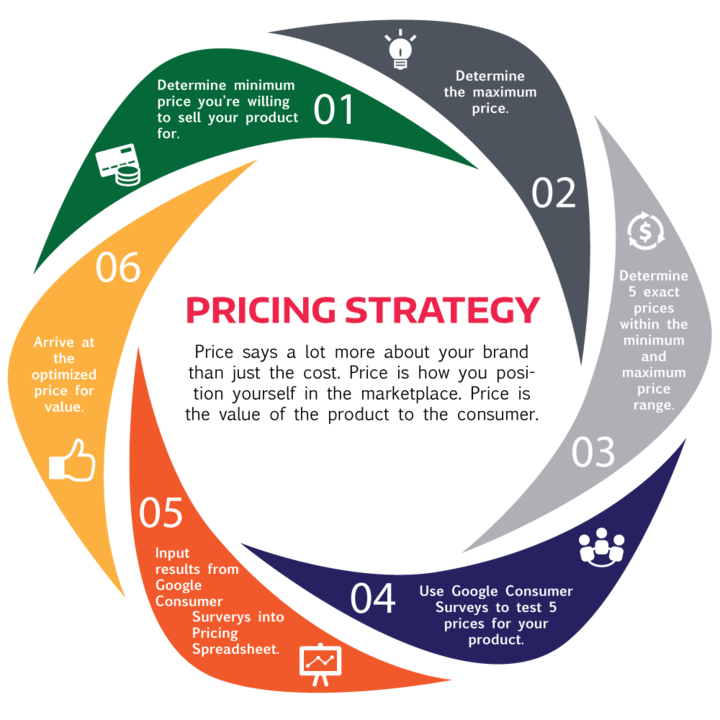How to Adjust Your Pricing Strategy for Different Market Segments
How to Adjust Your Pricing Strategy for Different Market Segments
Blog Article

Master Effective Pricing Techniques to Take Full Advantage Of Profit
In the ever-evolving landscape of business, mastering effective prices methods is essential for companies intending to make the most of profit. A nuanced understanding of pricing psychology can dramatically influence client actions and getting decisions.
Recognizing Prices Psychology
Understanding pricing psychology is vital for businesses aiming to enhance their prices approaches. This field analyzes how consumers view prices and just how these perceptions affect their purchasing choices. Secret principles in pricing psychology include the anchoring impact, where the first rate offered functions as a referral factor for customers, and the concept of cost sensitivity, which varies among various customer segments.
Furthermore, services can utilize the notion of regarded worth, where the regarded benefits of an item or service can justify a higher rate factor. Costs rates can create a mood of exclusivity, attracting customers that connect greater rates with superior high quality. On the various other hand, psychological rates, such as setting a price at $9.99 rather of $10, can dramatically affect customer behavior by making costs show up more eye-catching.
In addition, deficiency and seriousness can boost the regarded value of products, prompting quicker purchasing decisions. Understanding these emotional triggers makes it possible for businesses to formulate prices methods that not just drive sales however also foster customer commitment. Thus, understanding rates psychology is crucial for effective prices method formula, leading to enhanced profitability and market positioning.
Implementing Value-Based Pricing

Next off, sector your clients based on their willingness to pay and the value they view. By doing so, you can tailor offerings and prices approaches to align with different sections.
Constantly check market conditions and client feedback to fine-tune your prices method over time. By executing value-based prices, organizations can boost earnings while fostering long-term consumer loyalty.
Discovering Dynamic Rates Versions
In today's swiftly changing market landscape, dynamic prices designs have actually become a powerful technique for services looking for to maximize revenue and respond to changes in demand. These models permit firms to readjust their rates in real-time based on various aspects such as consumer actions, market fads, and supply degrees. By leveraging information analytics and algorithms, services can identify optimum prices factors that take full advantage of sales while remaining competitive.
Dynamic prices can take different forms, including time-based prices, where prices Web Site vary based upon time of day or period, and demand-based prices, which changes prices according to present consumer need. This flexibility not only enhances profitability but also improves consumer complete satisfaction by using costs that show real-time market problems.
Applying dynamic prices needs a durable technical infrastructure and a deep understanding of client sections. It is essential for companies to check market signals and customer actions continuously, guaranteeing that pricing methods align with broader business objectives. Transparent interaction regarding prices changes can help reduce consumer frustration and foster count on, inevitably leading to sustained success in a competitive marketplace. Accepting vibrant pricing can therefore be a transformative technique in the quest for making best use of revenue.
Studying Rival Rates
Keeping an eye on competitor pricing is essential for businesses aiming to keep an one-upmanship in their corresponding markets. By examining rivals' rates strategies, companies can identify market trends, comprehend customer choices, and adjust their pricing appropriately. This evaluation involves gathering information on rivals' rates, promotional methods, and product offerings to notify rates decisions.
To properly evaluate competitor rates, businesses need to make use of different devices and techniques, such as price tracking software, marketing research records, and customer responses. This information can expose how competitors position their services and products, allowing businesses to differentiate their offerings or adopt comparable approaches to continue to be relevant.
In addition, it is important to categorize competitors right into indirect and direct competitors. Direct competitors offer comparable products or solutions, while indirect competitors may satisfy the same customer demand with various services. Understanding the subtleties between these teams will make it possible for services to tailor their rates methods better.
Inevitably, continuous competitor rates evaluation is vital for making educated prices decisions. It enables companies to continue to site web be active in action to market changes, ensuring they can take opportunities and reduce threats basics connected with pricing strategies.
Assessing Rates Performance
Comprehending how rival prices influences market dynamics brings about a natural concentrate on evaluating rates performance within one's very own business. This evaluation is essential for determining locations of toughness and possibilities for renovation, eventually boosting earnings.
In addition, conducting normal rates audits can reveal disparities between expected and actual efficiency. This involves contrasting prices data across various sections and channels to recognize differences and determine trends. Integrating customer comments can give understandings right into perceived value versus actual rates, ensuring placement with market expectations.
Last but not least, leveraging data analytics tools can assist in much deeper insights into rates efficiency, allowing services to make data-driven adjustments (Pricing Strategy). By constantly examining rates efficiency, companies can adapt to market changes and enhance their methods, guaranteeing sustained productivity in an affordable landscape
Final Thought
By leveraging prices psychology, organizations can improve regarded worth and tailor pricing to varied client segments. The fostering of vibrant and value-based rates models facilitates real-time changes based on demand and customer desire to pay.
Understanding prices psychology is essential for companies intending to enhance their rates methods. Comprehending these mental triggers makes it possible for companies to develop pricing approaches that not only drive sales but also foster consumer loyalty. Thus, grasping prices psychology is crucial for reliable prices strategy formulation, leading to enhanced earnings and market positioning.
By analyzing competitors' pricing approaches, business can identify market trends, understand consumer choices, and readjust their prices appropriately. By leveraging pricing psychology, services can boost perceived worth and tailor pricing to diverse client sections.
Report this page